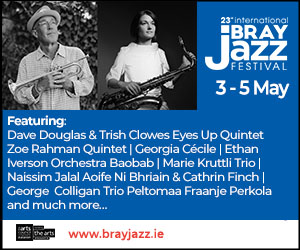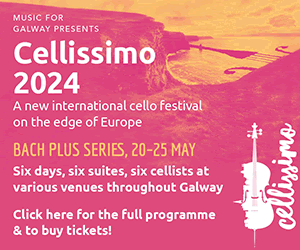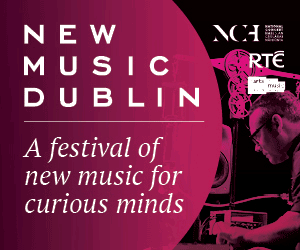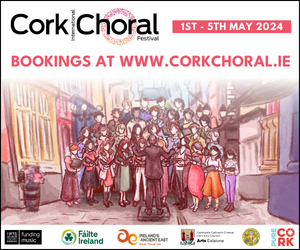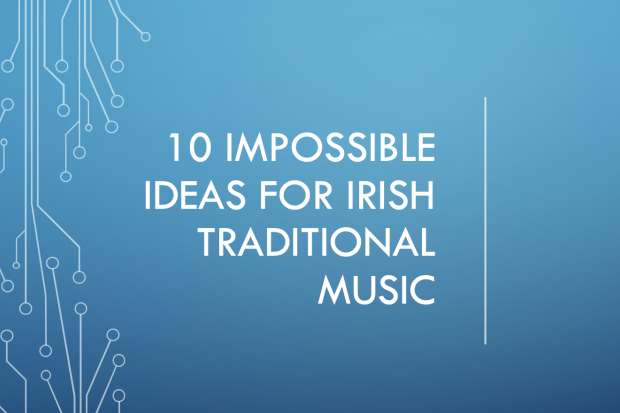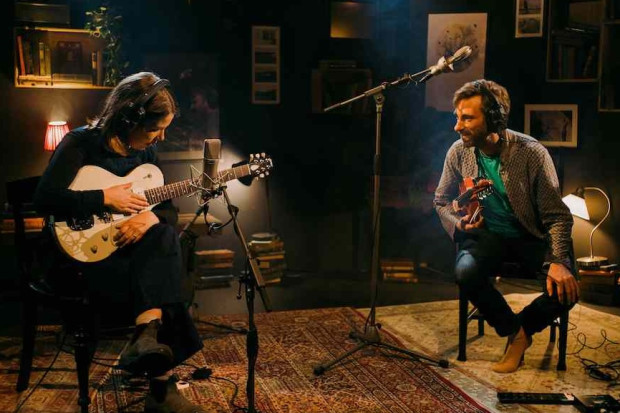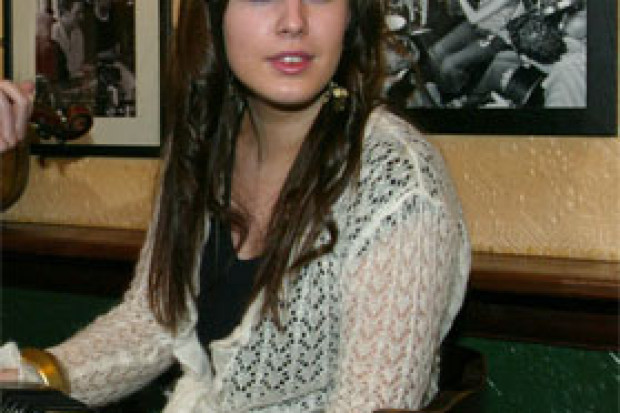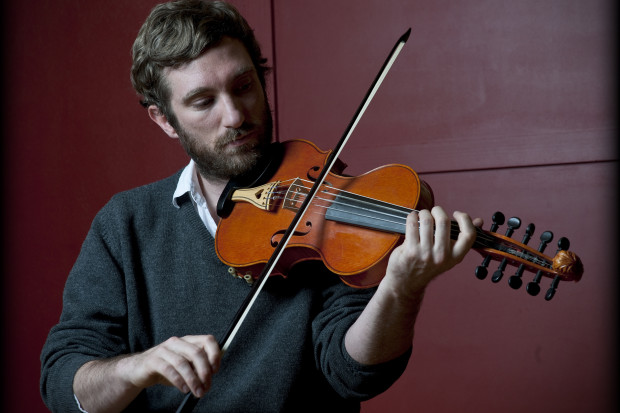Hand on Heart Talk
The playing of traditional music does not happen in a vacuum. There are always contexts to any performance, such as whether it is being danced to, if the playing is happening in a private or public environment, and so on. Following on from a series of informal chats between Katie Verling of Glór, Dermot McLaughlin, then with the Arts Council, and Martin Hayes, exploring the ways in which the Glór Centre, Ennis, might celebrate its second birthday, an idea emerged signalling it could be of some value to facilitate those seeking to discuss what players might see as the deeper meaning of the music and the reasons why players decide to play it.
To this aim, a series of talks were devised by Katie Verling in the Glór Centre setting out to allow informed players and observers of the music to discuss their views on the music, its value, how they choose to play it as well as speculating on the future.
The talks were open to the public and delivered in a setting which likened to an overheard private discussion. Most contributors came with a string of ideas reflecting ‘hand on heart’ type of personal perspectives. In short, it not only was structured like late night television arts chat shows, but the presence of a wide couch and coffee table in a very intimate atmosphere meant that the only thing missing was the cameras…
The keynote ‘address’ by Martin Hayes was very informal and delivered without a script. It was clear, however, that considerable thought and structure had gone into his contribution and the delivery worked well as the freedom from the constraints of the written word allowed him to develop significant points as he encountered them.
It must be said that the primary thrust of Martin’s address focused on the personal significance of the music to him. Even at this early stage of the proceedings a key concept to the remainder of the presentations was introduced, namely that of the aspiration of a player to achieve some level of inspiration through the music, whether for the player or the audience. Ultimately this concept emerged from a number of speakers as an attempt, through playing, to achieve a level of ‘spirituality’ through the music. Some would eventually equate this spirituality in religious terms and others in artistic terms.
Saturday’s proceedings began with a panel chaired by Toner Quinn with presentations from Emer Mayock, Caoimhín Ó Raghallaigh and Noel Hill. Each player outlined how they initially found an interest in the music and outlined their approaches to playing. While there were considerable contrasts in how each player came to the music, each were agreed that spirituality was a core element of their approach in playing. Noel Hill employed an unusual, but highly effective, technique of offering a lengthy list of words that sprang to mind in reaction to the theme of the proceedings. These ranged from pathos to beauty, to ‘glickery’ and without detailing interpretations, seemed to strike a chord with the audience.
From my perspective as a middle-aged player who has given consideration to the main theme over a number of years, it was incredibly refreshing to listen to Caoimhín’s account. He noted that after achieving a certain skill level of playing he reviewed his music against some very significant criteria such as meaning and, again, spirituality. As an outcome of this review, he radically adjusted his direction and approach in playing. He freely noted that he had not figured out the ‘grand scheme’ of a personal musical philosophy, but it was immensely rewarding and encouraging for the future of the tradition to witness a player so relatively young, yet accomplished, even addressing such questions which many three times his age have failed to resolve. His choice of taking the long, difficult, less travelled road versus much easier paths available to younger players was courageous in itself and will almost certainly pay considerable dividends in the long term.
The following session was chaired by Nicholas Carolan and saw Tom Munnelly and Iarla Ó Lionaird address singing. Naturally, Tom took a greater perspective on the English language tradition and Iarla the Irish language tradition in general, but not exclusively.
Tom effectively illustrated the context of the common, or every day function of singing while Iarla noted a passion for sean-nós singing and the spiritual experience which the idiom has to offer him. He stressed that this experience is likewise available to singers in other art forms and discussed the relevance, for him, in making connections between various forms while retaining the core objective of larger meaning in the performance.
The next session comprised Liz Doherty, in her capacity as Chair, and contributors Cormac Breathnach, Mick Kinsella and myself generally addressing the issues of innovation in the music. Cormac and Mick outlined how they came to the music and how it had come to have such meaning to their lives not only as musicians, but also in a more individual, holistic sense. They demonstrated how their music had developed into a personal approach while sourcing influences and absorbing innovation from both within and outside of the tradition. In each case, both jazz and blues have impacted. It was noted that such influential players as Tommy Potts had similarly travelled this road before them to produce an incredibly beautiful and personalised form of playing.
Liz Doherty challenged some of the outcomes of the wider traditional fraternity setting up ‘regulations’ or value judgements which do not apply across the tradition, illustrating the negative effect some of these can have on younger musicians in particular. By way of example, she noted ‘decrees’ of ‘good’ and ‘bad’ as regards the speed of playing. As for myself, I stressed that as a self-avowed ‘purist’, I saw innovation as having a central role in the performance of the music. I contested that though a traditional music, as a living one, it’s very nature demanded innovation in performance.
The increased commercialism of the music was discussed, including the observation that while commercialism has clear benefits, such as making a professional career as a traditional musician a genuine possibility, it also introduces problems of objective evaluation of the music. In the latter sense it was noted that commercial interests in seeing investments returning a profit often results in buying advertising, including reviews, which say solely what recording and management companies wish the public to see and hear. The question of where younger players will get their artistic frames of reference in an increasingly commercialised music sector was left hanging, however judging by the nods of agreement, well recognised.
The panel were, again, unanimous that a central element of playing the music is an attempt to either be inspired by the music, to create something which was itself inspirational or alternatively, to make some form of contact with the spirit of the music.
The final session of the proceedings comprised a discussion on the role of the media in engaging and portraying the music as well as an illustrated discussion on approaches to accompaniment by Steve Cooney and Martin Hayes. Nuala O’Connor outlined how historically, state-funded media, though monolithic, freely acknowledged its remit in documenting and presenting in a positive light the musical traditions of the country, including regional items of interest. It was interesting to note as a connection to the question of commercialism raised in the previous discussion, how increased competition in the visual broadcast medium has brought a change in stances on statutory cultural broadcasting remits.
The workshop closed with Steve Cooney, assisted by Martin Hayes, exploring multi-cultural rhythmic influences leading to his approach to accompanying traditional music. These influences were wide ranging. Steve creatively demonstrated his approach to playing for set dancers by attempting to create rhythmic patterns which strongly echo the timing of dancers battering. He finished by noting that while great successes had been made in the increased international appeal of the music resulting in career opportunities for the current generation of players, the quality of the business practices of many of the commercial concerns left much to be desired.
Overall, the intense link which, it must be also said, found strong resonance with the audience, centred around musicians attempting to make some form of personal contact with the ‘spirit’, or meaning of the music. This concept never emerged as pretentious by any means, but was entirely practical.
One body of opinion was not present at the workshop. That being the voice of those players who do not make any attempt to perform the music in any other manner than to play a pre-determined sequence of notes which confirms a specific tune. This fictitious, but entirely conceivable, musician was titled ‘the box player from the Midlands’ for the purposes of discussion. The entire workshop had no difficulty in recognising the stereotype while also agreeing the complete legitimacy of such a player who has twenty tunes in total, no desire to learn more or develop those they have. While all acknowledged such a player’s right to approach the music in this manner as well agreeing this player certainly found joy in their performance, it was left unstated that most would clearly prefer a different path of exploration in the music.
Published on 1 July 2004








